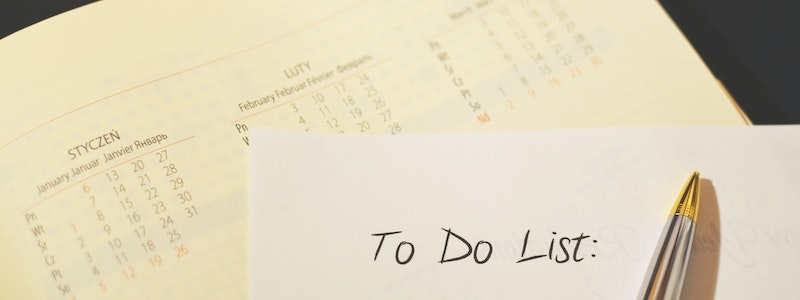
I’ll start by being honest. The first time I took a digital detox, it was unplanned. There was something uninteresting and unnecessary about the idea; I’m not as glued to my phone as most, I’m not a TikTok user, I rarely post on Facebook, and I use my phone primarily for work and necessary communication. I’ve seen the kind of people who need a digital detox, obsessed with their phones, glued to the screen from the moment they wake up to the final seconds before they sleep. That isn’t me. It never will be. I don’t need a digital detox – or so I thought.
I was heading to Cuba for the first time, and I’d done enough research, but I’d vastly underestimated how hard it would be to get a sim card or wifi access. I was limited to 10 minutes of painfully slow WiFi connection for the first few days before finally deciding to tell everyone I’d be AWOL for the rest of the week. It resulted in an enforced digital detox which totally opened up my mind. After an initial period of feeling anxious to get back ‘online,’ I soon began to feel completely different and felt a lot of stress and anxiety fade away.
We are constantly plugged into endless content and information/misinformation. These connections may provide valuable resources, help us communicate with loved ones, and even earn a living, but the truth is, the vast majority of us are on a crazy digital overload. Stress, anxiety, and a general sense of being overwhelmed are becoming visible in everyone. It really is a necessity periodically unplug and step away from the digital world. Even for a few hours, doing so will help you recharge emotionally and physically. In this ‘how to’, I hope to outline the steps I take to digital detox in the right way.
How long to digital detox for?

If you’re considering a digital detox, it’s important to choose a length of time that feels challenging but also achievable. Starting with a shorter detox period, such as a day or a weekend, can be a good way to ease into the experience if you’re feeling apprehensive. Remember, the goal of a digital detox is not to punish yourself but to give your mind a break and to help you establish healthier digital habits. So, choose a duration that you feel will be beneficial for you without causing too much disruption to your daily life.
Ultimately, the effectiveness of a digital detox is less about the exact duration and more about how you use the time away from digital distractions to reconnect with yourself and the world around you. The key is to make intentional choices about your use of technology rather than relying on it out of habit or as a default way to fill your time.
Step 1: Acknowledge the Need for Detox
The first step to a successful digital detox is recognising the impact of digital overload. That can be easier said than done. As I mentioned above, I honestly believed I was well in control of my relationship with the digital world. Still, a forced detox opened my eyes to the negative effects it was having on me.
Try putting your phone across the room for an hour and ignoring it. Keep the vibration or sound on so you can hear every message and notification and see how anxious you feel not being able to check it. If you lose hours scrolling through social media or looking at your phone during important conversations or family time, it’s time for a detox. Acknowledging this need is the first step towards healthier digital habits.
Step 2: Set Clear, Attainable Goals

By performing step one and analysing the negative ways your digital time affects things like your career, family time, relationships, and personal growth, you can start to picture the changes you need and where you want to be.
Before starting your detox, define what success looks like for you. Is it reducing screen time by several hours daily, only checking emails during work hours, or completely disconnecting for a weekend? Whatever your goal, make sure it’s specific, measurable, achievable, relevant, and time-bound (SMART).
Step 3: Inform Your Contacts
Let your friends, family, and coworkers know about your digital detox plan. This serves two purposes: it sets their expectations about your reduced availability and gives you an extra layer of accountability.
Doing this and letting people know you’ll be offline, you may feel a little anxious. That is excellent confirmation that you are doing the right thing and should spur you on with even more determination to complete the detox period and get to the mental and physical benefits which lie beyond.
Step 4: Remove Digital Temptations

While it may not be practical to turn off all your digital devices and lock them far away, you should at least limit the apps and access you have to content.
You may well need to keep your phone in case of emergencies, but that doesn’t mean you need to have all the apps connected. If you’re brave, you could go ahead and delete your social media and entertainment apps – doing so can be an enlightening step. Alternatively, if you’re not quite ready to hit the X, consider turning off Bluetooth, wifi, and network signals and limit your phone to calls and texts (for emergency use only) during your detox time. Make the digital world less accessible to make your detox more attainable.
Step 5: Find Alternative Activities
Replace digital activities with non-digital ones. Read a book, go for a walk, meditate, learn an instrument, or engage in a hobby. These activities can help reduce anxiety, improve mood, and increase focus, contributing to better mental health.
Before your digital detox begins, consider making yourself a schedule and/or to-do list. Not only does this keep you busy and your mind away from what you think you’re missing, but it also helps you get through many chores and tasks you’ve been putting off in the past.
Step 6: Establish a Routine

Part of your planning should also help you create a digital-free daily routine. Even though this may just be a few days, it’s a great way to taste what could be and help you limit your digital reliance once your detox is over.
Routines can help you manage your digital detox by providing structure. Set specific times for checking your phone or emails. Having a predictable schedule reduces anxiety and increases control over your digital habits.
Step 7: Gradual Reintegration
Reintegration after a digital detox should be approached mindfully. You’ve had the opportunity to enjoy life unplugged, and it’s essential to maintain a balance as you bring digital elements back into your routine.
This doesn’t mean you have to go back to old habits. Instead, use the insights and perspectives gained during detox to cultivate a new relationship with technology. Consider which digital activities add value to your life and which simply create noise.
Prioritise meaningful connections, productivity, and learning over mindless scrolling. Remember, technology is a tool that should serve you, not control you. It’s not about completely eliminating digital use but rather about creating a healthier, more intentional digital lifestyle that supports your overall well-being.




